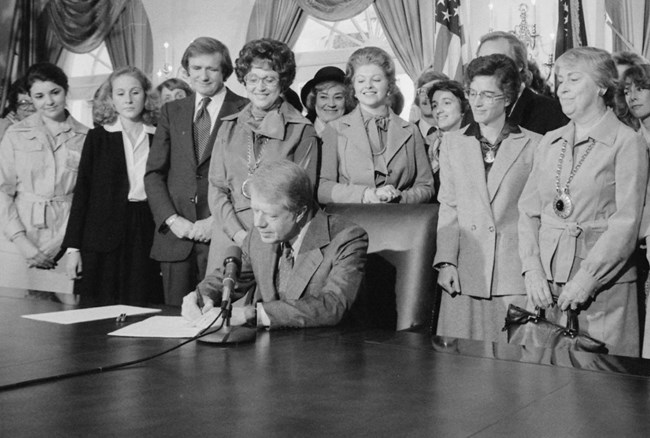

After the ratification of the 19th Amendment in 1920, suffragists like Alice Paul knew that their work wasn’t finished. While the government recognized women’s right to vote, many women still faced discrimination. Paul and other members of the National Woman’s Party drafted the Equal Rights Amendment. If ratified, the amendment would guarantee equal rights to all people regardless of their gender. The Equal Right Amendment was ratified by both houses of Congress in the 1970s but it failed to get adequate support from the states. It has not yet been added to the Constitution.
Women’s rights advocates did make progress in passing other legislation. Congress passed the Equal Pay Act in 1963, making it illegal to pay a woman less for doing the same job as a man. A year later, Congress passed the Civil Rights Act of 1964. This act is often associated with the Civil Rights Movement as it prohibits employers from discriminating against an individual based on their race. But the passage of the act was also a big step in advancing women’s rights. The act also states that employers cannot discriminate against someone based on their gender. Before this act, employers could choose not to hire a woman because of her gender.
A century after the ratification of the 19th Amendment, women are still advocating for their rights. But the passage of the 19th Amendment was an important milestone in women’s history. The amendment gave women the power to vote and have a say in running our democracy.
Still curious? Read more about the legacies of Woman Suffrage.